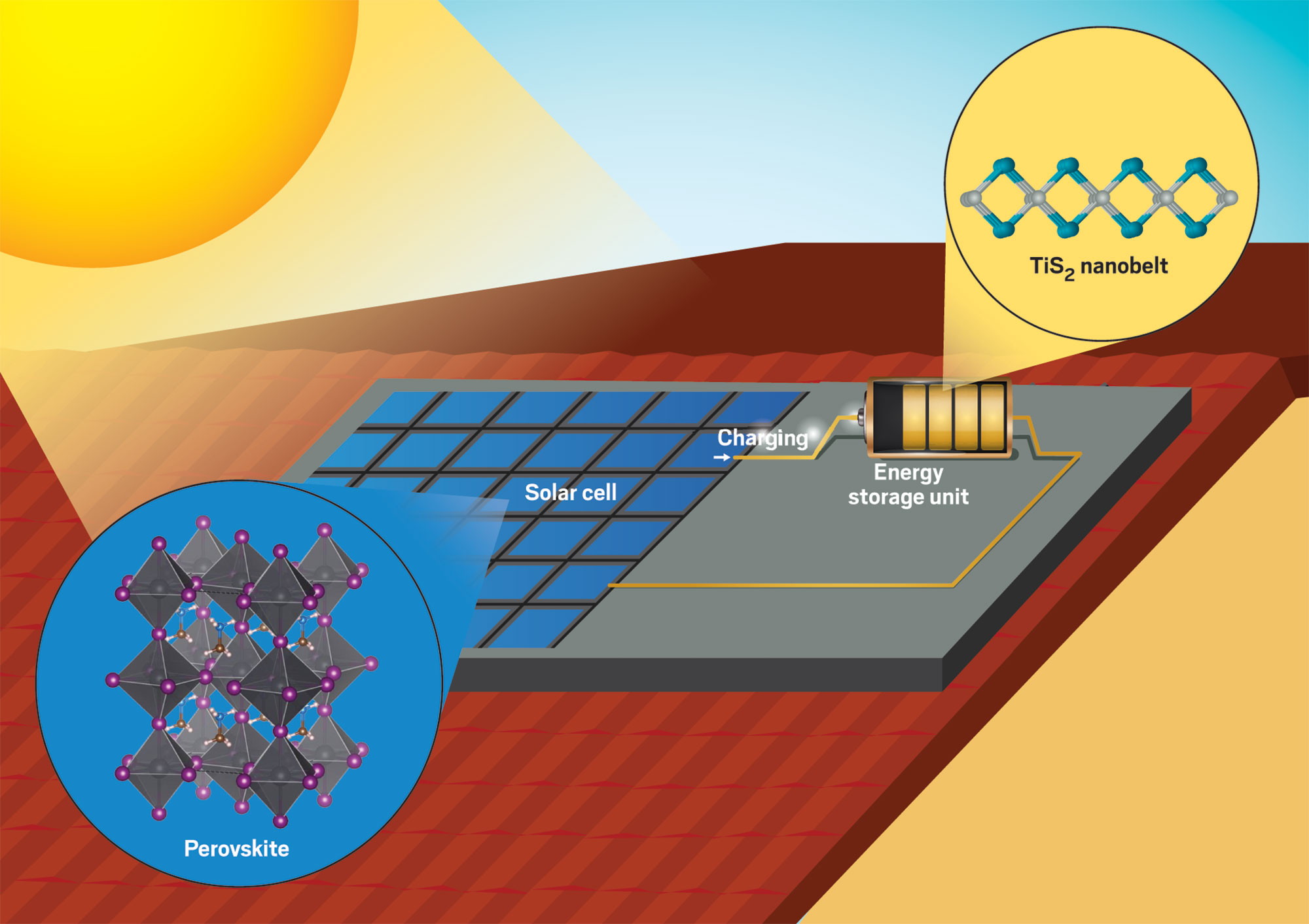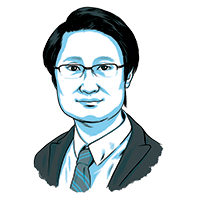Advertisement
Grab your lab coat. Let's get started
Welcome!
Welcome!
Create an account below to get 6 C&EN articles per month, receive newsletters and more - all free.
It seems this is your first time logging in online. Please enter the following information to continue.
As an ACS member you automatically get access to this site. All we need is few more details to create your reading experience.
Not you? Sign in with a different account.
Not you? Sign in with a different account.
ERROR 1
ERROR 1
ERROR 2
ERROR 2
ERROR 2
ERROR 2
ERROR 2
Password and Confirm password must match.
If you have an ACS member number, please enter it here so we can link this account to your membership. (optional)
ERROR 2
ACS values your privacy. By submitting your information, you are gaining access to C&EN and subscribing to our weekly newsletter. We use the information you provide to make your reading experience better, and we will never sell your data to third party members.

Luisa Whittaker-Brooks
Sustainability powerhouse is building multitasking materials for the future
by Matt Davenport
August 20, 2018 | APPEARED IN VOLUME 96, ISSUE 33
For Luisa Whittaker-Brooks, the quest to make the materials of the future started with understanding the shortcomings of the past.
Her team at the University of Utah is exploring a variety of materials to bolster electronic devices, including solar cells and batteries. And the idea isn't just to make these technologies work better but also to make them do more by bringing optimized, advanced materials together in next-gen, multitasking products.
Whittaker-Brooks grew up in Panama, where most of the power comes from hydroelectric dams. This reliance becomes more dangerous as the impacts of climate change become more severe, she says.
"In Panama, basically our rivers are drying up," she says. "And that made me think about how I can use other types of alternative energies."
One approach would be to control the crystal structure of perovskite solar-cell materials to deliver optimal energy-harvesting properties. But Whittaker-Brooks is not restricting her synthesize-and-optimize scheme to one material. Perovskites are just one piece of her puzzle.
To distinguish herself from others in the crowded solar-cell field and to build next-generation devices, she's engineering a variety of functional materials to one day work together in multifunctional devices.
For instance, her team is investigating the energy-storing behavior of two-dimensional metal chalcogenides, such as titanium sulfide, that could be incorporated into a power source to collect energy harvested from a perovskite solar cell. Such a device could continue delivering power even when the sun's down.
Whittaker-Brooks's group is also developing materials that generate electrical energy from heat, potentially providing another power source that works in the dark. Ultimately, the team's goal is to bring all these materials together in a single device to deliver uninterrupted, sustainable energy.
The team's materials would also be useful in a number of other devices, Whittaker-Brooks explains, including cell phones, sensors, and even hard drives. In pursuing these diverse applications, she is working to understand the fundamental materials science that she hopes will enable her and others to eventually engineer materials on demand, with specific properties for specific applications.
That's a tall order, but Whittaker-Brooks has always been a positive, tenacious force in the lab, thriving on challenges, says organic electronics expert Lynn Loo, Whittaker-Brooks's postdoc adviser at Princeton University. These traits have helped Whittaker-Brooks establish herself as a leader in materials synthesis, characterization, and device fabrication.
"The word 'relentless' comes to mind," Loo says. "She's a ball of fire."
Watch Whittaker-Brooks speak at the American Chemical Society national meeting on Aug. 20 in Boston.
Vitals
Current affiliation: University of Utah
Age: 34
Ph.D. alma mater: University at Buffalo
Role model: The late Mildred Dresselhaus. Her contributions laid the groundwork for all the advances we have witnessed in carbon-based electronic and spintronic systems, as well as low-dimensional materials for thermoelectrics.
If I were an element, I would be: Uranium because, via transmutation, I could decay into other elements of the periodic table (at least for a short period of time).
Latest TV show binge-watched: "Empire"
Walk up song: "Dura" by Daddy Yankee
Research at a glance

Credit: ACS Appl. Nano Mater. /Eric Amerling/Yang H. Ku/C&EN/Shutterstock
Whittaker-Brooks is working toward next-generation electronics that incorporate multiple advanced materials within the same device to deliver uninterrupted power. Here, a theoretical device contains a perovskite solar cell that has been optimized to harvest energy from sunlight and a titanium sulfide-containing energy storage unit that has been fine-tuned to efficiently collect the solar cell's energy.
Three key papers
"Morphology and Optoelectronic Variations Underlying the Nature of the Electron Transport Layer in Perovskite Solar Cells"
(ACS Appl. Energy Mater. 2018, DOI: 10.1021/acsaem.7b00147)
Materials
Amazing Women
Luisa Whittaker-Brooks
Sustainability powerhouse is building multitasking materials for the future
by Matt Davenport
August 19, 2018
| A version of this story appeared in
Volume 96, Issue 33


Vitals
Current affiliation: University of Utah
Age: 34
Ph.D. alma mater: University at Buffalo
Role model: The late Mildred Dresselhaus. Her contributions laid the groundwork for all the advances we have witnessed in carbon-based electronic and spintronic systems, as well as low-dimensional materials for thermoelectrics.
If I were an element, I would be: Uranium because, via transmutation, I could decay into other elements of the periodic table (at least for a short period of time).
Latest TV show binge-watched: “Empire”
Walk-up song: “Dura” by Daddy Yankee
Three key papers
“Morphology and Optoelectronic Variations Underlying the Nature of the Electron Transport Layer in Perovskite Solar Cells” (ACS Appl. Energy Mater. 2018, DOI: 10.1021/acsaem.7b00147)
“Electroabsorption Spectroscopy Studies of (C4H9NH3)2PbI4 Organic-Inorganic Hybrid Perovskite Multiple Quantum Wells” (J. Phys. Chem. Lett. 2017, DOI: 10.1021/acs.jpclett.7b01741)
“Distinctive Extrinsic Atom Effects on the Structural, Optical, and Electronic Properties of Bi2S3-xSex Solid Solutions” (Chem. Mater. 2016, DOI: 10.1021/acs.chemmater.6b02081)
For Luisa Whittaker-Brooks, the quest to make the materials of the future started with understanding the shortcomings of the past.
Her team at the University of Utah is exploring a variety of materials to bolster electronic devices, including solar cells and batteries. And the idea isn’t just to make these technologies work better but also to make them do more by bringing optimized, advanced materials together in next-gen, multitasking products.
Whittaker-Brooks grew up in Panama, where most of the power comes from hydroelectric dams. This reliance becomes more dangerous as the impacts of climate change become more severe, she says.
“In Panama, basically our rivers are drying up,” she says. “And that made me think about how I can use other types of alternative energies.”
One approach would be to control the crystal structure of perovskite solar-cell materials to deliver optimal energy-harvesting properties. But Whittaker-Brooks is not restricting her synthesize-and-optimize scheme to one material. Perovskites are just one piece of her puzzle.
To distinguish herself from others in the crowded solar-cell field and to build next-generation devices, she’s engineering a variety of functional materials to one day work together in multifunctional devices.
For instance, her team is investigating the energy-storing behavior of two-dimensional metal chalcogenides, such as titanium sulfide, that could be incorporated into a power source to collect energy harvested from a perovskite solar cell. Such a device could continue delivering power even when the sun’s down.
Whittaker-Brooks’s group is also developing materials that generate electrical energy from heat, potentially providing another power source that works in the dark. Ultimately, the team’s goal is to bring all these materials together in a single device to deliver uninterrupted, sustainable energy.
The team’s materials would also be useful in a number of other devices, Whittaker-Brooks explains, including cell phones, sensors, and even hard drives. In pursuing these diverse applications, she is working to understand the fundamental materials science that she hopes will enable her and others to eventually engineer materials on demand, with specific properties for specific applications.
That’s a tall order, but Whittaker-Brooks has always been a positive, tenacious force in the lab, thriving on challenges, says organic electronics expert Lynn Loo, Whittaker-Brooks’s postdoc adviser at Princeton University. These traits have helped Whittaker-Brooks establish herself as a leader in materials synthesis, characterization, and device fabrication.
“The word ‘relentless’ comes to mind,” Loo says. “She’s a ball of fire.”


















Join the conversation
Contact the reporter
Submit a Letter to the Editor for publication
Engage with us on Twitter